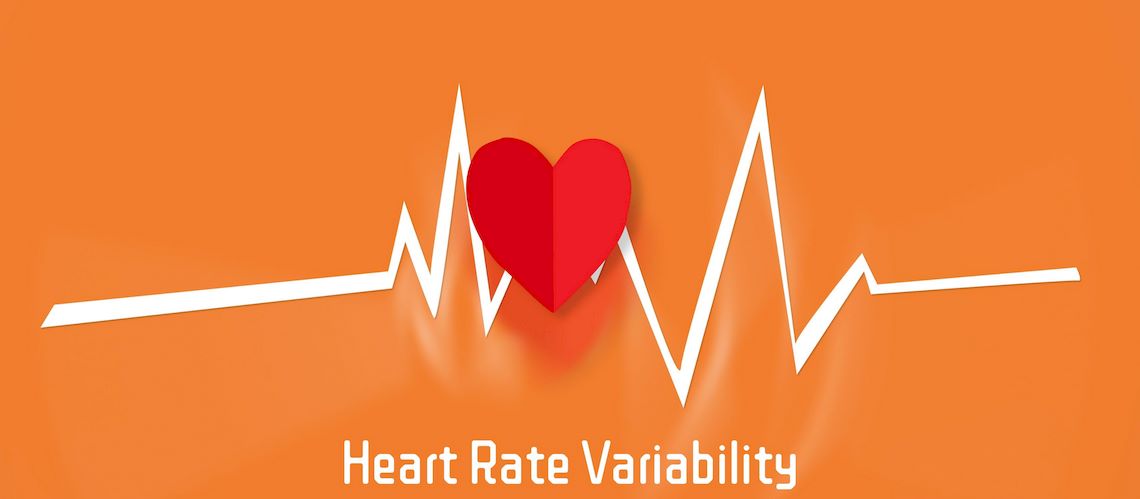Heart Rate Variability (HRV) has emerged as a significant biomarker for health, providing insight into various physiological and psychological processes. In the CORE Compass framework, which emphasizes Operational and Physical Vitality, Curiosity and Cognitive Growth, Resilience and Emotional Equilibrium, and Spiritual Harmony, HRV plays a pivotal role. It offers a window into the balance of the autonomic nervous system (ANS), specifically the interplay between the sympathetic and parasympathetic branches. Higher HRV is associated with improved health outcomes, emotional regulation, stress management, and cognitive function, while lower HRV can indicate stress, anxiety, and various health concerns (Mather & Thayer, 2018; Conder & Conder, 2014).
Application in CORE Compass
In the context of the CORE Compass framework, HRV provides a multidimensional view of well-being. Its role spans across the four compass domains:
- Operational and Physical Vitality: HRV is a marker of physical health, particularly cardiovascular fitness and recovery. Individuals with higher HRV tend to show better recovery from physical exertion and reduced susceptibility to stress-related ailments (Tai et al., 2022; Botek et al., 2013).
- Curiosity and Cognitive Growth: HRV has been linked to cognitive performance, including executive functions such as working memory and attention (Forte et al., 2019). The ability to maintain higher HRV is associated with better focus and mental flexibility, promoting continuous learning and intellectual curiosity.
- Resilience and Emotional Equilibrium: The Neurovisceral Integration Model posits that HRV reflects the effectiveness of the brain’s emotional regulation networks. Individuals with higher HRV are better equipped to manage emotional responses, demonstrating greater resilience in the face of stress and emotional challenges (Mather & Thayer, 2018). HRV biofeedback, in particular, has been shown to enhance emotional regulation by helping individuals control their physiological responses to stressors (Prinsloo et al., 2013; Dormal et al., 2021).
- Spiritual Harmony: HRV is also connected to the deeper experience of calm and spiritual well-being. Practices such as controlled breathing, meditation, and mindfulness, which promote parasympathetic activity and increase HRV, are key to achieving spiritual balance (Prinsloo et al., 2013; Park et al., 2020).
Benefits within CORE Compass
Each domain of the CORE Compass framework benefits from the insights HRV provides:
- Physical Vitality: HRV serves as an essential tool in monitoring physical readiness and recovery. Athletes with higher HRV demonstrate better cardiovascular fitness, enhanced recovery times, and reduced risks of overtraining (Manresa‐Rocamora et al., 2021; Tai et al., 2022). Monitoring HRV allows individuals to tailor their physical routines for optimal health and performance.
- Cognitive Growth: HRV’s relationship with cognitive functions such as attention and working memory highlights its role in mental sharpness. Studies have shown that individuals with higher HRV exhibit greater cognitive resilience, allowing for enhanced mental clarity and focus, which are critical for learning and personal development (Forte et al., 2019; Passi et al., 2022).
- Emotional Resilience: Higher HRV is strongly correlated with emotional resilience, a key aspect of managing stress and maintaining emotional balance. HRV biofeedback has proven effective in reducing symptoms of anxiety and depression by helping individuals consciously regulate their emotional responses through physiological control (Prinsloo et al., 2013; Dormal et al., 2021). This enhances the ability to recover from stress and maintain emotional equilibrium.
- Spiritual Harmony: The parasympathetic dominance reflected in higher HRV is closely associated with feelings of calm, presence, and spiritual balance. Practices like meditation, which increase HRV, have been shown to improve emotional and spiritual well-being, contributing to a deeper sense of harmony (Prinsloo et al., 2013; Park et al., 2020).
How to Integrate HRV in CORE Compass
To harness the benefits of HRV within the CORE Compass framework, individuals can adopt the following practices tailored to each domain:
- Physical Vitality: Athletes and individuals can use HRV monitoring tools, such as wearables, to assess their readiness for physical activity and optimize their training regimens. Lower HRV can signal a need for recovery or reduced training intensity, while higher HRV suggests readiness for more intense physical challenges (Botek et al., 2013; Manresa‐Rocamora et al., 2021).
- Cognitive Growth: HRV biofeedback can be used to enhance cognitive resilience by training the individual to manage stress and maintain focus. Engaging in controlled breathing exercises and mindfulness practices, which increase HRV, can lead to improved cognitive function and greater mental flexibility (Forte et al., 2019; Passi et al., 2022).
- Emotional Equilibrium: HRV biofeedback is an effective tool for managing emotions and enhancing emotional resilience. By practicing biofeedback techniques regularly, individuals can consciously influence their HRV, improving their ability to cope with stress and maintain emotional stability (Prinsloo et al., 2013; Dormal et al., 2021).
- Spiritual Harmony: Integrating HRV-enhancing activities such as meditation, deep breathing, and mindfulness into daily routines can promote greater spiritual balance and relaxation. These practices activate the parasympathetic nervous system, fostering inner peace and spiritual growth (Prinsloo et al., 2013; Park et al., 2020).
Conclusion
HRV is a versatile biomarker that offers valuable insights into multiple aspects of health and well-being, making it an integral tool within the CORE Compass framework. Whether it is enhancing physical vitality, fostering cognitive growth, building emotional resilience, or achieving spiritual harmony, HRV provides a measurable way to monitor and improve these key dimensions of life. By incorporating HRV biofeedback, mindfulness practices, and regular HRV monitoring into daily routines, individuals can take proactive steps toward achieving balance across the four compass domains and optimizing their overall health.
References:
- Botek, M., McKune, A., Krejčí, J., Stejskal, P., & Gába, A. (2013). Change in performance in response to training load adjustment based on autonomic activity. International Journal of Sports Medicine, 35(06), 482-488. https://doi.org
- Conder, R. and Conder, A. (2014). Heart rate variability interventions for concussion and rehabilitation. Frontiers in Psychology, 5. https://doi.org
- Dormal, V., Vermeulen, N., & Mejias, S. (2021). Is heart rate variability biofeedback useful in children and adolescents? A systematic review. Journal of Child Psychology and Psychiatry, 62(12), 1379-1390. https://doi.org
- Forte, G., Favieri, F., & Casagrande, M. (2019). Heart rate variability and cognitive function: A systematic review. Frontiers in Neuroscience, 13. https://doi.org
- Manresa‐Rocamora, A., Sarabia, J., Javaloyes, A., Flatt, A., & Moya‐Ramón, M. (2021). Heart rate variability-guided training for enhancing cardiac-vagal modulation, aerobic fitness, and endurance performance: A methodological systematic review with meta-analysis. International Journal of Environmental Research and Public Health, 18(19), 10299. https://doi.org
- Mather, M. and Thayer, J. (2018). How heart rate variability affects emotion regulation brain networks. Current Opinion in Behavioral Sciences, 19, 98-104. https://doi.org
- Park, S., Hwang, S., & Lee, S. (2020). Pilot application of biofeedback training program for racket sports players. Annals of Applied Sport Science, 8(4), 0-0. https://doi.org
- Passi, T., Lukander, K., Laarni, J., Närväinen, J., Rissanen, J., Vaara, J., … & Pakarinen, S. (2022). Effects of overnight military training and acute battle stress on the cognitive performance of soldiers in simulated urban combat. Frontiers in Psychology, 13. https://doi.org
- Prinsloo, G., Derman, W., Lambert, M., & Rauch, H. (2013). The effect of a single episode of short duration heart rate variability biofeedback on measures of anxiety and relaxation states. International Journal of Stress Management, 20(4), 391-411. https://doi.org
- Tai, C., Chen, Y., Kalfiřt, L., Masodsai, K., Su, C., & Yang, A. (2022). Differences between elite male and female badminton athletes regarding heart rate variability, arterial stiffness, and aerobic capacity. International Journal of Environmental Research and Public Health, 19(6), 3206. https://doi.org




